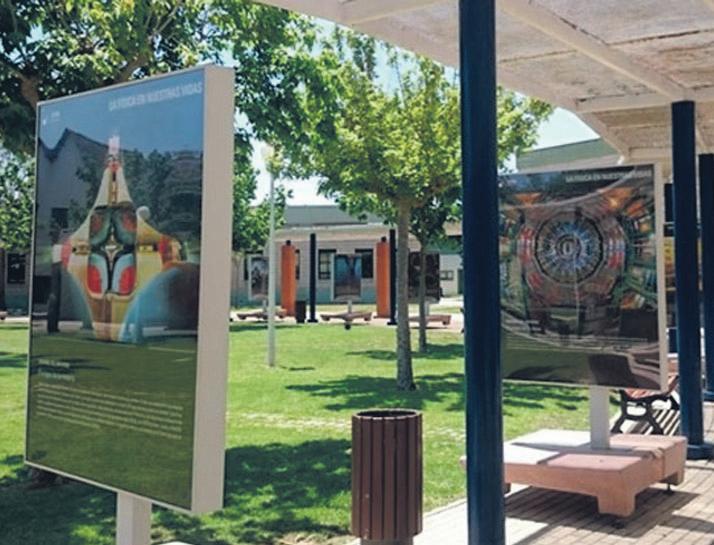
2 minute read
60K SUBSIDY FOR MUDIC SCIENCE MUSEUM
Orihuela City Council has approved a subsidy of 60,000 euros for the Vega Baja Interactive Science Museum (Mudic). The museum is a permanent structure which provides the spread of scientific knowledfe in the area. It is located in the Higher Polytechnic School of Orihuela (UMH Desamparados Campus) and managed by the MUDIC-VBS-CV Foundation. The foundation is made up of the Miguel Hernández University, the Orihuela City Council and the “Hypatia de Alejandría” Association of Science Teachers.
It is an educational museum that allows visitors to learn about science in a fun way. It is interactive, as visitors participate in the experiences and workshops that take place, and it is dedicated to all branches of science providing knowledge and forging relationships with other fields of knowledge and society.
Advertisement
The Vega Baja del Segura Didactic and Interactive Science Museum Foundation was created in December 2011 to manage the Museum and disseminate scientific culture across this region to the south of the Valencian Community. The Board of Trustees is made up of the mayor of Orihuela, as president, the Rector of the UMH and the President of the APCC. "Hypatia de Alejandría" and two more representatives from each of the associated institutions.
A hundred students take part in Pilar summer schools
Pilar de la Horadada Summer School was divided into two groups for the month of July, Ociopinar, which used the Municipal pool and the natural area of Pinar de Campoverde, where 48 students between the ages of 8 and 12 took part, and the ConexiÛn Juvenil, which was aimed at youths between the ages of 12 and 17, which included leisure activities carried out in different parts of the town with a number of excursions, in which 48 students participated.
The ConexiÛn Juvenil saw a different activity carried out every day while at Ociopinar there was also a camping trip, with tents in the natural area of Pinar de Campoverde.

by Tony Mayes
It’s a question increasingly asked because of the growing number of cases where police officers have been found guilty of wrongdoing.
Around one in 100 police officers in England and Wales faced criminal charges, including for sexual offences last year alone – an appalling statistic.
The kind of criminal charges faced by police officers can range from misconduct in a public office and sending grossly offensive messages on a public network to more serious offences including assault, sexual offences and even murder.
The new data comes amid a growing number of cases of serious criminality by officers. One example was former Met officer David Carrick, jailed for life after he raped, assaulted and inflicted “irretrievable destruction” on at least 12 women.
In 2021, another serving police officer, Wayne Couzens, used his police ID and handcuffs to kidnap, rape and murder 33-year-old Sarah Everard. Police missed clear chances to identify Couzens as a potential sex offender and a danger to women in the days, months and even years leading up to Everard’s murder.
In my book, the vast majority of serving police want, and do, a good job in trying to protect the public from criminals, but there are a growing number of bad apples and the problem is trying to identify and get rid of them before they do real harm.
So, what has gone wrong? I think the problem started more than a decade ago when the police force along with virtually every other aspect of everyday life in the UK were subject to Tory spending cuts. Fewer coppers on the streets meant criminals believed they stood more chance of getting away with their crimes undetected. Fewer officers meant less crimes were investigated – and there were howls of protests










